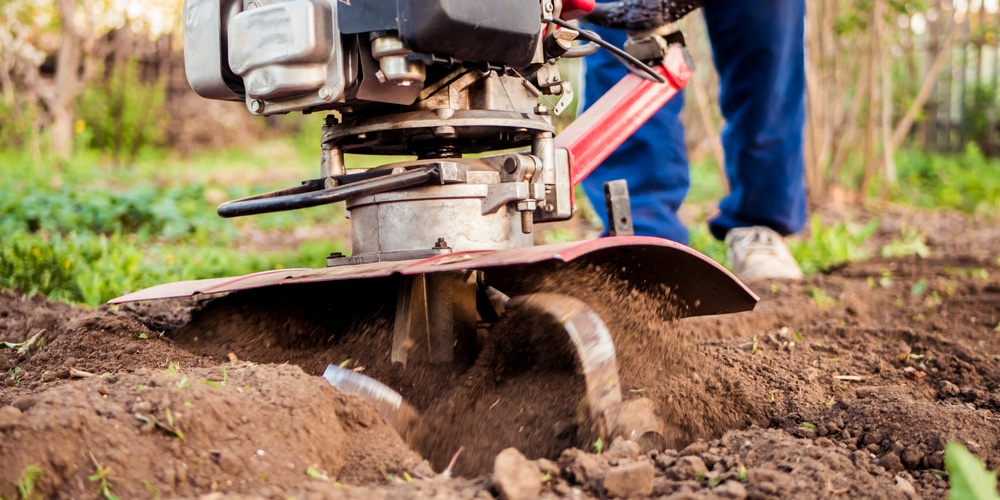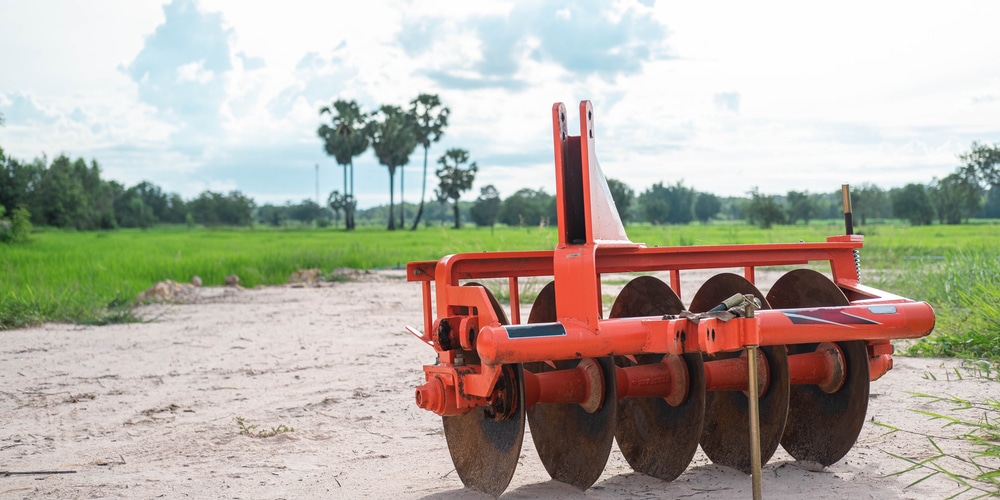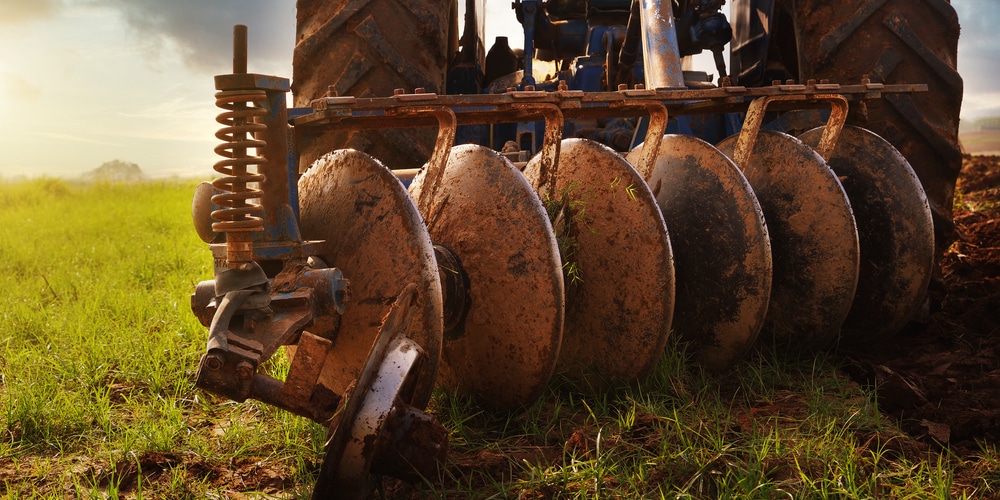For many landscapers, the tiller vs. disc harrow debate will never be settled. It is not uncommon to hear landscapers discussing which of these tools is better and why their preferred tool is superior.
Despite this constant back-and-forth, there are several key points that should be considered before choosing a tilling tool. This article will look at the tiller vs. disc harrow to help you make a choice that’s right for you.
What is a tiller?
A tiller is a small engine-powered machine with two or more rotating blades that are often used to break up dirt and prepare the ground for planting. Tillers can be configured vertically for use in smaller areas, like flower beds, or horizontally for larger spaces like fields. A tiller generally has c or l shaped blades and helps turn over the soil to help oxygenate it and mix in nutrients.
What is a disc harrow?
A disc harrow is a machine that has several discs with blades affixed to the edge. These blades can be adjusted to slice through different soil and vegetation types, removing unwanted materials and preparing the ground for planting. They are most commonly used to plow fields or for agricultural use, where large areas need to be plowed.
What is the difference between a tiller and a disc harrow?
Tillers and disc harrows are both used to turn over the ground for planting. The main difference between these two types of machines is the size. Tillers are generally smaller and are used to break up the ground in small areas, such as a garden or single field. Disc harrows are used for agricultural purposes.
A tiller breaks up dirt with rotating blades as opposed to disking the soil. Tillers are smaller and easier to use in confined spaces, such as flower beds or small gardens. This makes them ideal for landscapers looking to till smaller areas. If you are interested in performing light tilling work, then a tiller may be your best bet.
Disc harrows are larger, have more blades that can be adjusted, and can handle rougher terrain. They are perfect for plowing new ground after the earth has been left fallow and can even be used to remove large chunks of excess dirt and vegetation.
If you are looking for a tool that can plow new ground, break up the soil, and remove unwanted material from an area, then a disc harrow may be your best choice.
What to consider when choosing a tiller vs. disc harrow
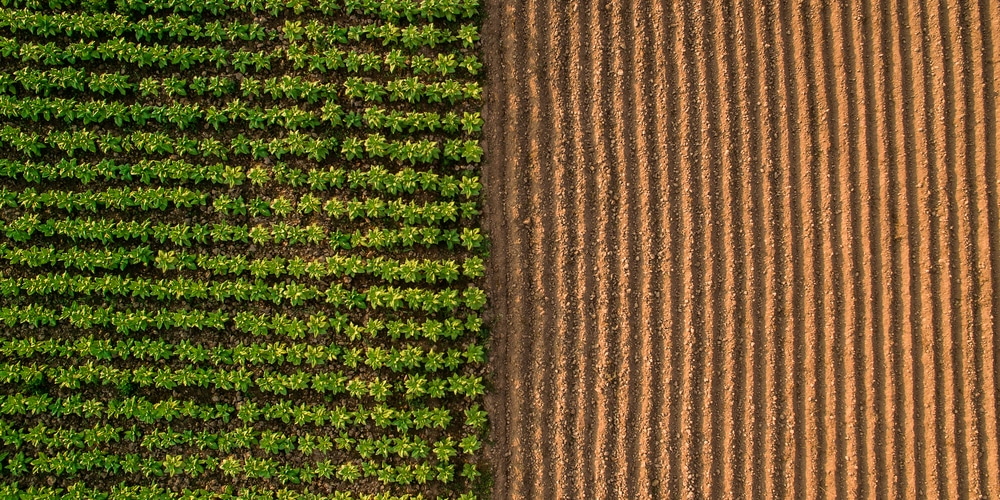
One of the first things to consider is whether you’ll need to till large areas or smaller sections. If you are landscaping a large area, having a tiller that is designed for larger areas will be helpful, so it’s not necessary to stop working frequently because your engine overheats or the tiller is otherwise stuck.
Tilling large areas can also be difficult on smaller, weaker engine tiller models. Replacing the engine with a stronger model may be an option to consider if you have more than one larger area to till each day, but it will increase the overall price of your tiller tool. One other benefit of larger models is that it may be possible to attach additional implements for even more functionality.
Tilling depths are also an important consideration when choosing a tiller vs. disc harrow. Depending on the conditions of your soil, you may want to choose a tiller with different depth options. Other things to consider include the power source, whether or not it is attachment capable, and how well it can be adjusted.
Which is better: yard tiller vs. disc harrow?
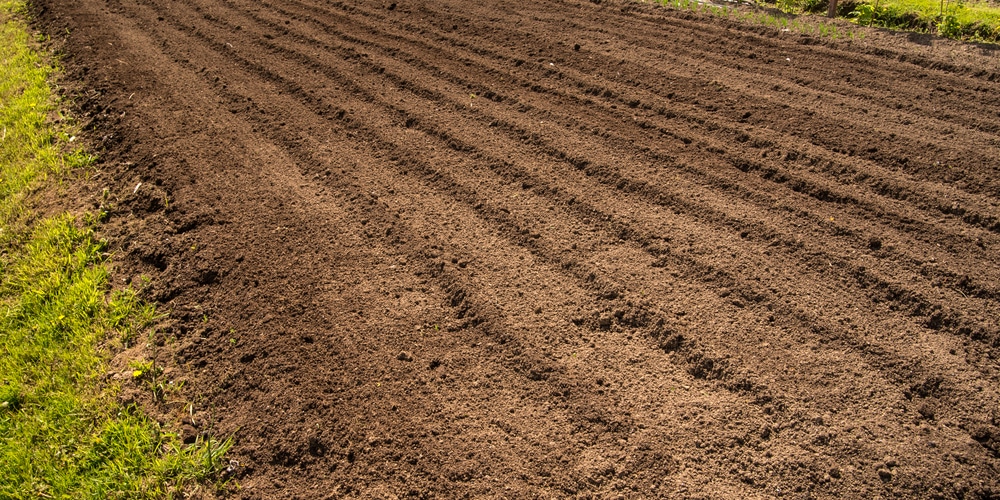
This question will likely never have a single answer that everyone agrees on. A disc harrow typically has more versatility in that it can be used in a wider variety of conditions, and its depth options are normally more adjustable.
Additionally, you’ll want to keep in mind that rototillers allow you to till soil without having to purchase additional equipment, such as edgers and weed whackers.
Although there may be some situations where a rototiller simply won’t work, most landscapers agree that it is the preferred tool for preparing the soil to be planted.
Conclusion
A tiller vs. disc harrow comparison like this can never come to a definitive conclusion since there are too many variables involved in each situation. However, knowing about these considerations will help you choose the best option for your garden.
A tiller should be able to handle a few acres (how big is an acre explained). If you did decide to go for a tiller, here are our top picks for the best tiller for new ground. Thanks for reading!
